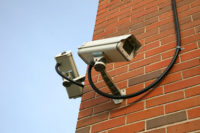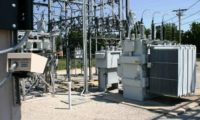Avoiding Nuisance Alarms with Automatic Threat Assessment




The continual threat from terrorist activities at critical facilities requires early detection before they can reach their target and complete their mission. This in turn has resulted in the need for advanced security systems that can effectively detect terrorist activity, while at the same time, reduce the need to address alarms caused by normal friendly activity.
Automatic Threat Assessment, also referred to as Identify Friend or Foe (IFF), is the ability to automatically acknowledge alarms created by friendly assets and can be achieved with a security system that goes beyond the typical “intrusion sensor only” configuration.
The addition of a tracking system associated with “friendly” vehicles and personnel can provide the missing information necessary to tighten security and reduce the need to take action on alarms caused by friendly targets, all while reducing the cost of threat assessment in terms of both material and personnel cost. It is important to understand how tracking systems and intrusion sensors can work together to automatically classify an “Actual Intruder.”
The Nuisance Alarm
Typical intrusion sensors include intelligent fences, ground proximity sensors, RADAR, LIDAR and video analytics. The role of the intrusion sensor is to identify a breach and provide that notification to security personnel so they may perform verification. The formal alarm types received from intrusion sensors include: Intrusion, Nuisance, Environmental and False Alarms. The intrusion sensor strives to have a high detection rate and a low false alarm rate. For this reason, the nuisance alarm can be problematic as it reflects a real event for the intrusion sensor, but it’s often a non-event for the security operator.
The Verification Problem
This security dilemma deals with detecting actual intruders or terrorists in a secure area, yet in an active environment with “normal” vehicular and/or pedestrian traffic. Typically, a secure area employs many sensors to detect intruders, which may only provide a “Suspected Intruder” list. The follow-up task is to decide whether or not to reclassify a “Suspected Intruder” as an “Actual Intruder.” This process is typically a manual task and can be difficult and requires crucial time.
Take the example of routine landscaping, whereby the landscape crew needs to access a gate in order to address vegetation on both sides of the perimeter. This type of event proves problematic. Intrusion sensors, such as radar, video analytics or an intelligent fence, will all alarm on this event with a high degree of accuracy. Even for very accurate systems that can uniquely track the object over a long period, it is highly likely that over the period of time the landscapers are in the area, the track could be lost, causing the system to re-alarm on the same person or vehicle.
It may also be the case that the landscaping crew requires the opening of a gate. If that gate is integrated into the facility’s access control system via a dry contact or beam breaker device, it may continuously alarm while left open or each time one of the workers or the vehicle passes through the entrance. Security will either need to validate each alarm by verifying it on a camera or having an officer follow the landscaping crew throughout their route.
Another typical action is to temporarily disable the intrusion sensor, which now leaves a portion of the facility vulnerable.
The existence of a “friendly” alarm event that needs to continue to be validated can result in the security personnel becoming complacent and either not verifying it, or not verifying it in a timely manner. These actions take resources, inhibit security from reacting to a real event and can potentially increase the risk of intrusion by disabling and re-enabling sensors.
Locating ‘Friendly’ Assets
This is where a tracking system could combine with the intrusion sensors to provide additional value. Tracking systems consist of two main types of locating devices: GPS-enabled devices and transponder devices. A transponder is a wireless communications device that emits an identifying signal in response to a specific interrogation signal.
Advances in Global Positioning System (GPS) technology have facilitated the growth of GPS-enabled tracking devices, which contain two functional parts: GPS receiver and wireless communication. Modern GPS receivers can achieve an accuracy rating of less than three meters, provide an update once per second and do not require visibility to the open sky.
Combining Detection and Location
With an understanding of intrusion sensors’ ability to locate and detect intrusions and tracking systems’ ability to locate personnel and assets, the combination of systems can result in automatic threat assessment. Routine situations that require significant security involvement, such as the landscaping scenario, now become an event that can be automatically managed by the system. With the augmentation of a tracking system, the Command & Control system now has the ability to know friendly targets and their locations. This can allow the system to perform a check before alarming.
In the case of a perimeter alarm, it would have the intelligence to understand, within a level of confidence, that the object detected by the intrusion sensors is the same friendly item being tracked by the tracking system. If the system determines the targets to be the same object, the alarm can be suppressed, eliminating the need for security to verify the event.
A Common Operating Picture
The integration of these types of systems is not complex in terms of how to coordinate data. Interface documents exist for these types of integration and are done on a regular basis. Typical position and target information is communicated over XML in a standard format. However, to gain these benefits the tracking systems and intrusion sensors must all work within a common geospatial operating picture.
Geospatial, or geo-referenced systems, have the understanding of how the system and its data relate to real-world coordinates: latitude, longitude, speed, heading, altitude and time. The ability to understand where an object is currently located in time and space is what allows tracking systems and intrusion sensors to synergistically perform automatic verification.
This combined knowledge of the target’s track also allows the fusing of the GPS data and the intrusion sensor data into a single object and path. This further aids security by reducing target and track clutter.
A typical example is a security officer, enabled with a tracking device, performing a tour around a fence protected by video analytics-enabled cameras. On a typical Perimeter Security Information System, a normal security officer tour would result in two icons on the display – one friendly from the tracking system and one unknown from the video analytics. This scenario would also result in two similar object tracks. Security would need to review the situation and understand that this symbology represents a single target and a single track.
Integrating the tracking system with the video analytics system allows for a fusing of this data, and the resulting Command and Control symbology is a single target and a single track.
Additional Considerations
There are additional considerations that need to be understood when combining a tracking system with intrusion sensors. These include update rate, time and location accuracies and overlapping coverage.
Ideally, all sensors would be synchronized when it comes to timing aspects, but this is typically not the case. Different timing between data updates and time inaccuracies can result in the inability for the systems to confidently conclude that two tracks were created by the same target. Transport delay, the transmission of the GPS data through the satellite, can also be an issue. For tracking devices, it’s vital for the data to be received by the C2 system with a repeatable transport delay. Variability in the transport delay also decreases the ability to automatically verify the threat.
Geographic accuracy of both the GPS tracker and the intrusion sensor is another important factor in data fusion. Typical GPS trackers have an accuracy rating for three to 10 meters. Actual accuracy varies based upon the visible GPS satellites, tall buildings, body worn, RF interference, etc. Intrusion sensors also possess an inherent accuracy. Radar surveillance may have a resolution of 1m x 1m at close range, but it expands at far range to 1m x 20m.
Intelligent fence sensors and video analytic systems can have resolutions that vary from 1m to 25m, based on the type of sensor and the terrain. These geographic inaccuracies can be handled to some degree by considering other factors, including heading, speed and previous track, but it’s important to understand where these inaccuracies can occur.
Overlapping coverage of surveillance sensors also affects data fusion. In the case of track fusion, this ability is only available in areas where both a geospatial intrusion sensor exists and a tracking system is operational. If there are gaps in the overlapping coverage, or if there are areas that do not include geospatial-based intrusion sensors, then fusion might not be possible.
There are also other scenarios, where multiple geospatial sensors exist and they may all detect the same intruder. The C2 system must take into account all these sensors and merge overlapping intruder targets prior to data fusion. This will result in the ability to continue automatic threat assessment.
Conclusion
Security personnel face a difficult environment. They are expected to detect, assess and react to security threats within current or reduced manpower limitations. One means of achieving this is through the fusing of intrusion sensor and tracking system data. This combination of sensors can help relieve the operator workload by automatically assessing alarms created by friendly targets. It also provides the basis for enhanced situational awareness, allowing the display of geospatial, fused target and track information on the operator’s C2 display.
Looking for a reprint of this article?
From high-res PDFs to custom plaques, order your copy today!









